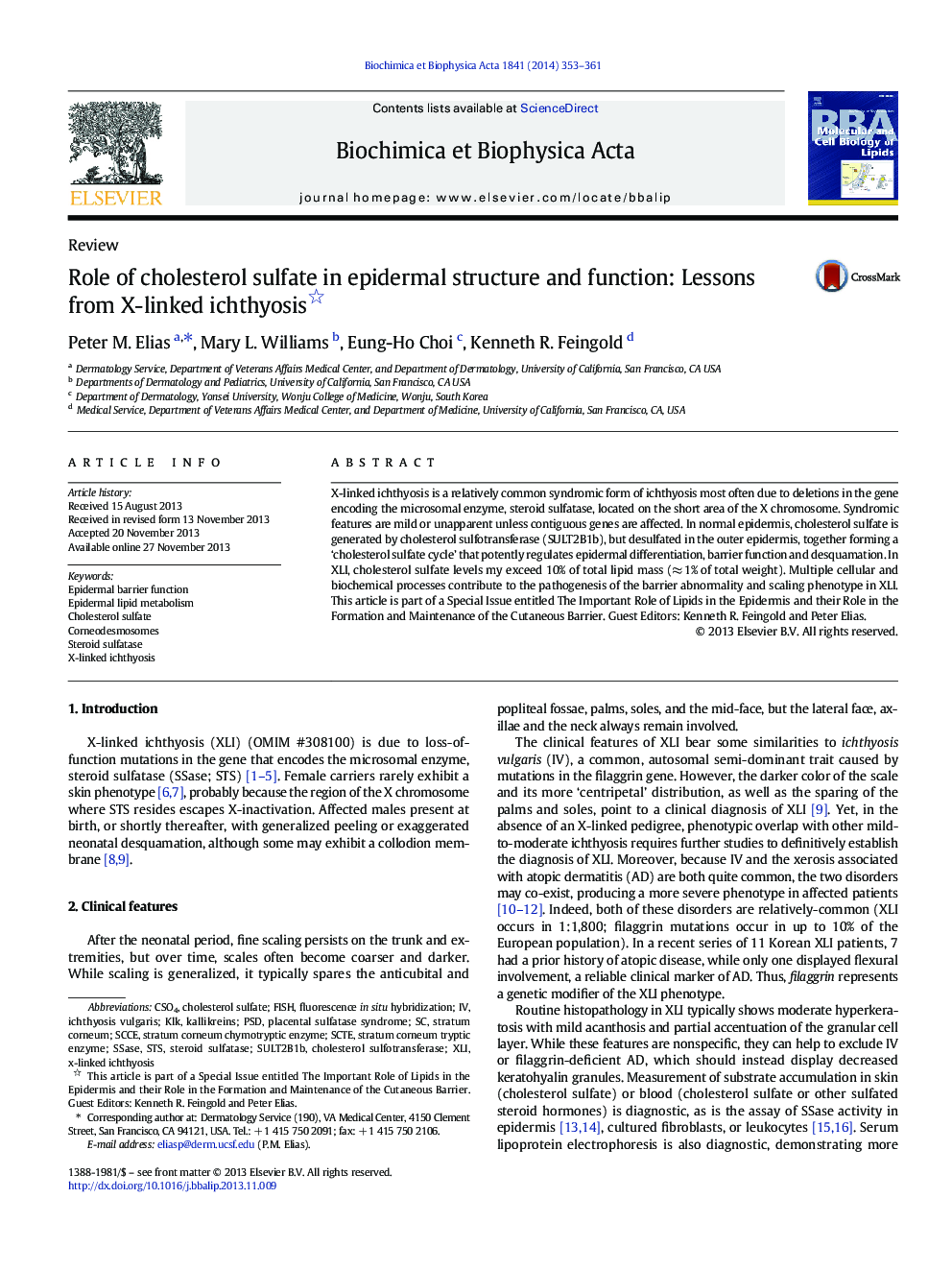| Article ID | Journal | Published Year | Pages | File Type |
|---|---|---|---|---|
| 1949192 | Biochimica et Biophysica Acta (BBA) - Molecular and Cell Biology of Lipids | 2014 | 9 Pages |
•X-linked ichthyosis (XLI) is due to loss-of-function mutations in steroid sulfatase (SSase; STS).•Cholesterol sulfotransferase (SULT2B1b) generates CSO4, while SSase degrades CSO4 in the epidermis.•Sulfation of cholesterol is linked to epidermal differentiation and corneocyte formation.•The phenotype in XLI results from persistence of “pristine” corneodesmosomes in the outer SC.•Disruption of lamellar bilayers creates a pathway for excess water loss in XLI.
X-linked ichthyosis is a relatively common syndromic form of ichthyosis most often due to deletions in the gene encoding the microsomal enzyme, steroid sulfatase, located on the short area of the X chromosome. Syndromic features are mild or unapparent unless contiguous genes are affected. In normal epidermis, cholesterol sulfate is generated by cholesterol sulfotransferase (SULT2B1b), but desulfated in the outer epidermis, together forming a ‘cholesterol sulfate cycle’ that potently regulates epidermal differentiation, barrier function and desquamation. In XLI, cholesterol sulfate levels my exceed 10% of total lipid mass (≈ 1% of total weight). Multiple cellular and biochemical processes contribute to the pathogenesis of the barrier abnormality and scaling phenotype in XLI. This article is part of a Special Issue entitled The Important Role of Lipids in the Epidermis and their Role in the Formation and Maintenance of the Cutaneous Barrier. Guest Editors: Kenneth R. Feingold and Peter Elias.
